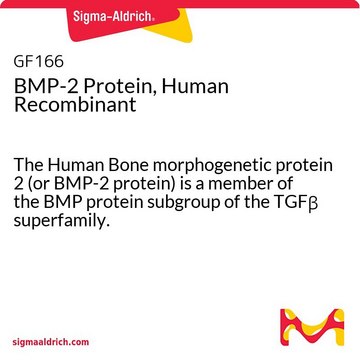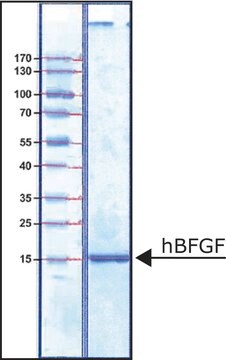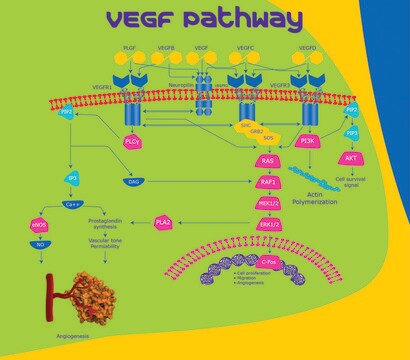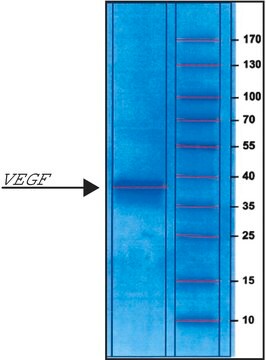H4791
BMP2, human
BMP-2, recombinant, expressed in HEK 293 cells, HumanKine, suitable for cell culture
Synonyme(s) :
Bone Morphogenetic Protein 2 human, BMP-2
About This Item
Produits recommandés
Nom du produit
Bone Morphogenetic Protein 2 human, BMP-2, recombinant, expressed in HEK 293 cells, HumanKine, suitable for cell culture
Source biologique
human
Niveau de qualité
Produit recombinant
expressed in HEK 293 cells
Forme
lyophilized powder
Puissance
≤60 ng/mL EC50
Qualité
endotoxin tested
Poids mol.
dimer 30-38 kDa (glycosylated)
Conditionnement
pkg of 10 μg
Conditions de stockage
avoid repeated freeze/thaw cycles
Technique(s)
cell culture | mammalian: suitable
Impuretés
≤1 EU/μg Endotoxin level
Numéro d'accès UniProt
Température de stockage
−20°C
Informations sur le gène
human ... BMP2(650)
Vous recherchez des produits similaires ? Visite Guide de comparaison des produits
Description générale
Actions biochimiques/physiologiques
Forme physique
Notes préparatoires
Remarque sur l'analyse
Informations légales
Code de la classe de stockage
11 - Combustible Solids
Classe de danger pour l'eau (WGK)
WGK 3
Point d'éclair (°F)
Not applicable
Point d'éclair (°C)
Not applicable
Faites votre choix parmi les versions les plus récentes :
Déjà en possession de ce produit ?
Retrouvez la documentation relative aux produits que vous avez récemment achetés dans la Bibliothèque de documents.
Les clients ont également consulté
Articles
The use of hydrogel-based biomaterials for the delivery and recruitment of cells to promote tissue regeneration in the body is of growing interest. This article discussed the application of hydrogels in cell delivery and tissue regeneration.
Notre équipe de scientifiques dispose d'une expérience dans tous les secteurs de la recherche, notamment en sciences de la vie, science des matériaux, synthèse chimique, chromatographie, analyse et dans de nombreux autres domaines..
Contacter notre Service technique






